After 47 years, seven generations, and nearly 2.5 million models sold, VW Golf production for the United States market has ended. VW expects the remaining 2021 Golf models, assembled in Puebla, Mexico, to meet consumer demand through the end of the year. As part of the phase-out, the VW Golf comes in just one trim level, the TSI, for 2021.
VW is shuttering the traditional Golf to make way for the 2022 Golf GTI and Golf R, due this fall. So, technically, the Golf name will continue in the United States, but the “regular ole” affordable Golf is going out to pasture.
Writing On The Wall
The Golf, regarded by many enthusiasts as a car with character, has likely (and unfortunately) fallen on deaf ears in an American market dominated by trucks and SUVs. That’s a high hurdle for little cars like the Golf to overcome. However, even in a car-to-car comparison, buyers are more apt to favor traditional sedans than a hatchback. Even within VW, the Jetta is arguably a more attractive option to the average consumer.
VW made a similar move in the summer of 2019 with the Golf name, ceasing production of the Golf Alltrack and Golf SportWagen as SUV sales industrywide – including VW’s own Atlas and Tiguan – continued to climb. “SUVs have definitely assumed the mantle of family haulers from the station wagons and minivans we remember from our childhoods,” said Scott Keogh, President and CEO, Volkswagen of America, Inc., at the time
2021 VW Golf
In its final iteration, the 2021 VW Golf TSI is still one solid little car. Exterior features include 16-inch wheels, automatic headlights, and rain-sensing wipers. On the inside, drivers will enjoy the heated leatherette seats, panoramic tilt-and-slide sunroof, and Volkswagen’s Car-Net suite of remote techy features. Advanced safety features include Forward Collision Warning and Autonomous Emergency Braking with Pedestrian Monitoring (Front Assist), a Blind Spot Monitor, and Rear Traffic Alert.
Under the hood is a 1.4-liter turbo with 147 horsepower and 184 lb-ft. of torque. A six-speed manual or a Tiptronic eight-speed automatic are the transmission options. With this final version of the VW Golf, we might opt for the manual – just for fun! Starting MSRP of the manual is $24,190 (with destination) while the automatic starts at $24,990 (also with destination).
VW Golf Through The Years
Golf I: 1975-1984
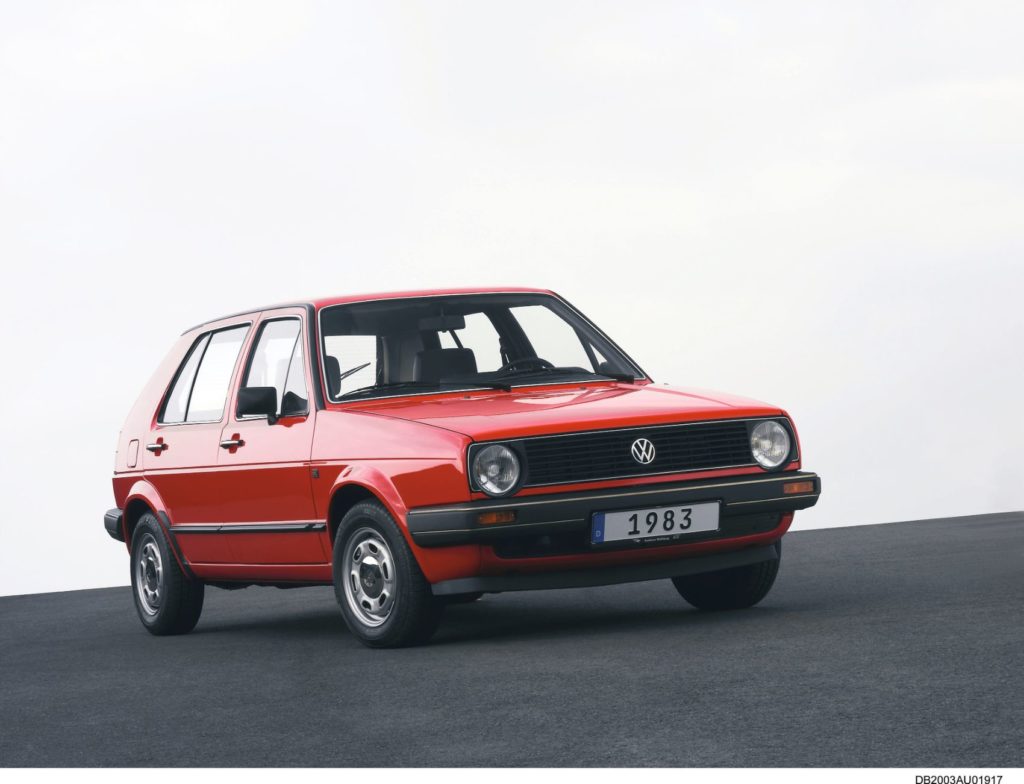
Seasoned VW enthusiasts may remember when the loveable little car first arrived in the U.S. in December of 1974. Known as the “Rabbit” to American buyers, the first-generation Golf came with a tiny 1.5-liter engine with 70 horsepower. In 1983, a GTI variant arrived with a 1.8-liter engine with 90 horsepower.
Golf II: 1985-1992
The Rabbit named hopped away in 1985, and the Golf moniker appeared in its place. This new Golf was on the protein diet, having grown in nearly every regard. It was seven inches longer, two inches wider, and had a three-inch longer wheelbase. The standard 1.8-liter engine now kicked out 85 horsepower while the 2.0-liter of the GTI produced 131 horses. Also new for the 1985 Golf: catalytic converter, anti-lock brakes, and power steering.
Golf III: 1993-1999
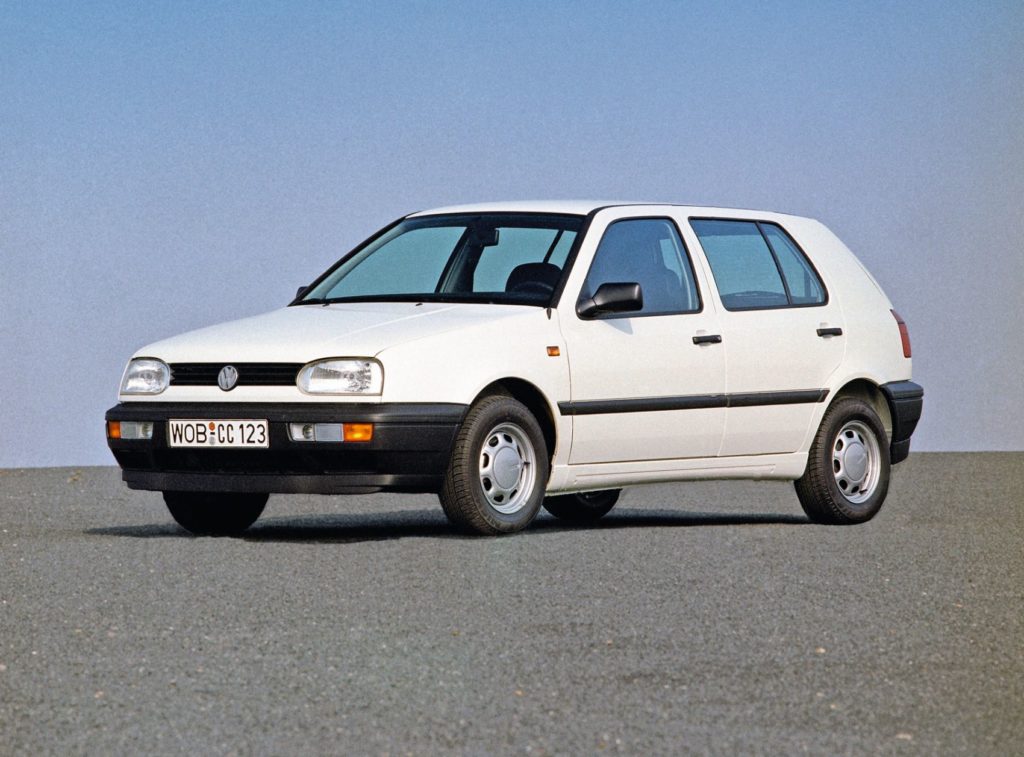
As the times changed, so too did the VW Golf. By 1993, the Golf, now in its third generation, saw improved crash performance thanks to a new “wedge-shaped” body. Front and side airbags were also on the standard equipment list for the 1993 Golf. The base 2.0-liter made 155 horsepower, while the GTI boasted a 2.8-liter VR6 with 172 horsepower. 1993 was also the first time cruise control was offered for the Golf.
Golf IV: 1999.5-2005
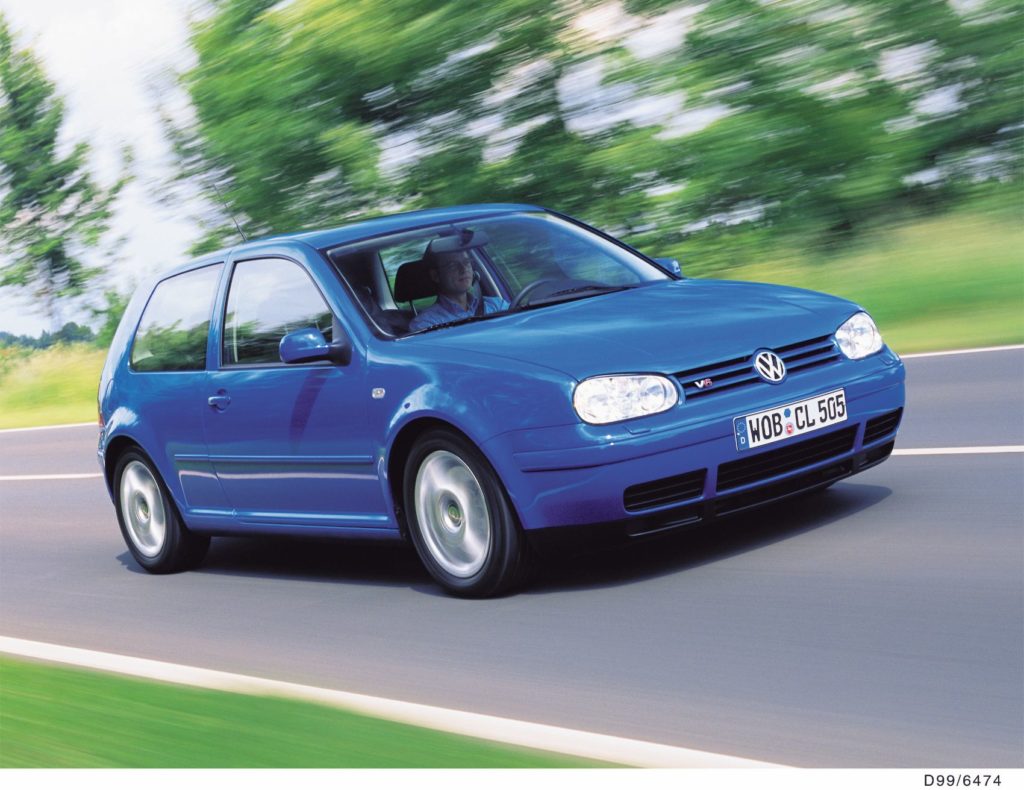
As Y2K loomed, the fourth-generation Golf provided reassurance with electronic stability control and side curtain airbags. The flatter windshield and roofline allowed designers to create a steeper rear window to accent the “hot hatch” look. The upgrades continued under the hood as well, with the Golf GTI getting its first-ever turbo.
Although they waited four years after the supposed end of the world on January 1st, 2000, VW did finally give enthusiasts a reason to celebrate. In 2004, the R32 debuted with VW’s 4MOTION all-wheel drive. The R32 was rad and racy with its six-speed manual and 240-horsepower engine.
Golf V: 2006-2009
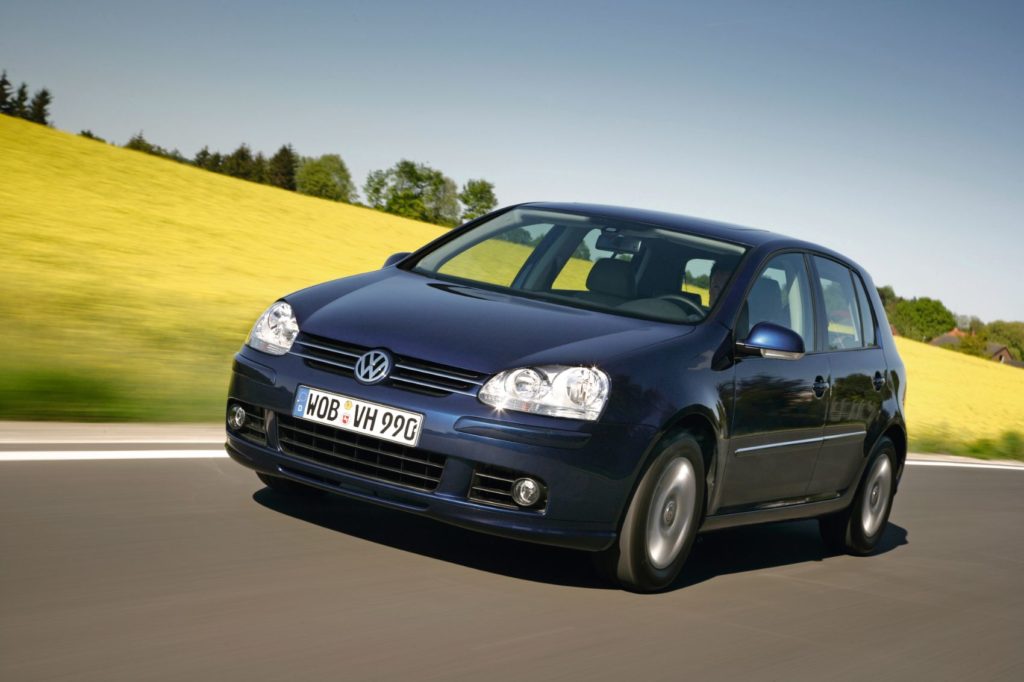
By 2006, the Golf was the Rabbit again. The Golf, now entering its fifth generation, debuted with a new multi-link rear suspension, rain-sensing wipers, and Xenon headlights. The base 2.5-liter created a healthy 150 horsepower while GTI models peaked higher yet at 200 horsepower thanks to a 2.0-liter turbo. The R32 later found its way back in 2008 with 250 horsepower.
Golf VI: 2010-2014
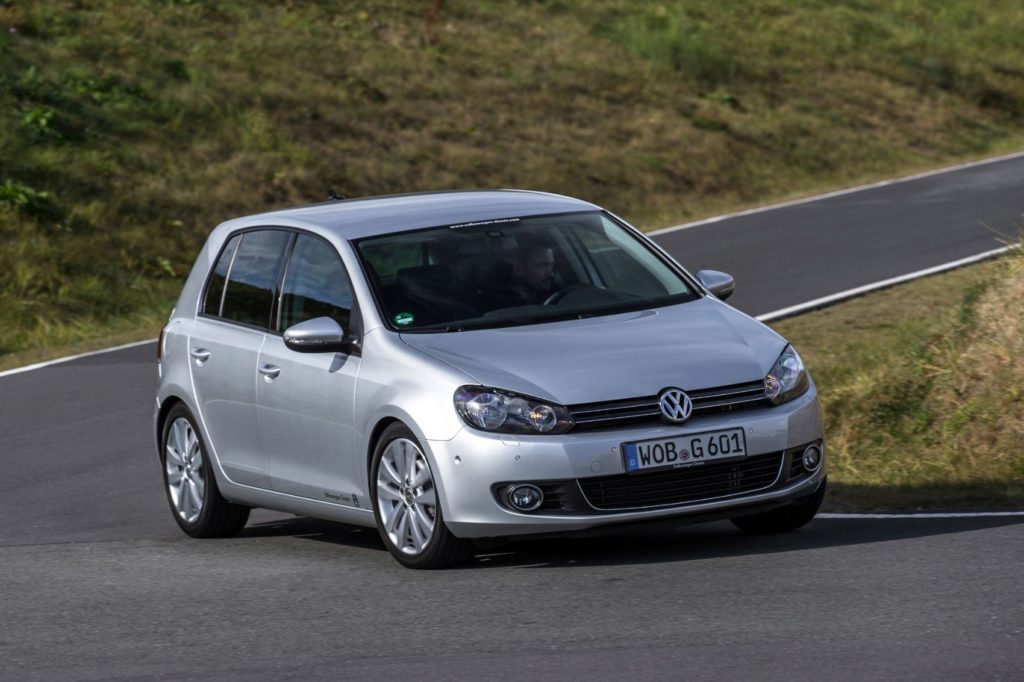
In 2010 for the car’s sixth generation, the Rabbit name signed off, and the Golf name once again returned. At the top of the mountain was the 2012 Golf R. The Golf R hit the scene with a 2.0-liter turbo with direct-injection, a worthy replacement for the prior VR6 engine. This new turbo was pushing close to 260 horsepower, which came as a delight to VW loyalists. The base 2.5-liter powertrain was more modest at 170 horsepower.
Golf VII: 2015-2021
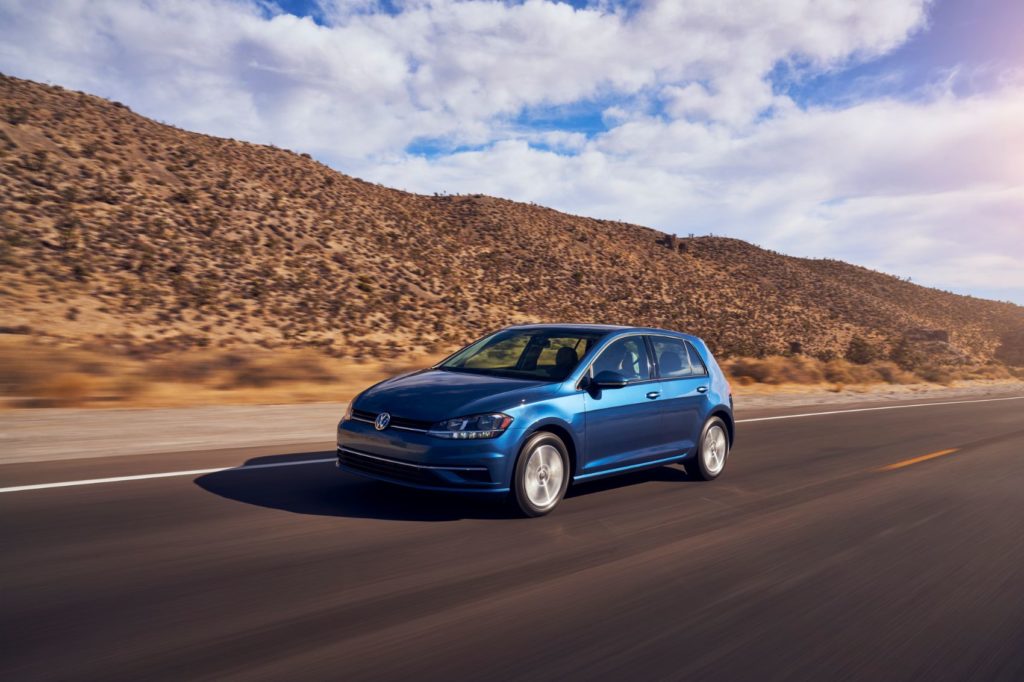
The Golf’s seventh and final generation, which began in 2015, was based on VW’s Modular Transverse Matrix (MQB) architecture. Styling revisions came in 2018, alongside new infotainment and advanced safety features. A 1.8-liter four-cylinder replaced the base 2.5-liter powertrain from the sixth generation to the benefit of an extra six mpg on the highway. Enthusiasts still had the GTI and Golf R in this final generation with new versions of the 2.0-liter TSI engine with either 228 (GTI) or 288 horsepower (Golf R).
Perhaps the biggest compliment to the Golf in this more modern era was being named the North American Car of the Year in 2015.
“Over four decades, the Golf has delivered a great value to American drivers,” said Hein Schafer, Senior Vice President, Product Marketing and Strategy, Volkswagen of America, Inc. “It exemplified what Volkswagen does best – melding dynamic driving characteristics with purposeful packaging and unmatched quality. While the seventh-generation Golf will be the last of the base hatches sold here, the GTI and Golf R will carry its legacy forward.”
Carl Anthony is Managing Editor of Automoblog and a member of the Midwest Automotive Media Association and the Society of Automotive Historians. He serves on the board of directors for the Ally Jolie Baldwin Foundation, is a past president of Detroit Working Writers, and a loyal Detroit Lions fan.
Photos & Source: Volkswagen of America, Inc.
Original article: VW Golf Production Ends for U.S. Market. Here is a Brief Look Back at Each Generation
from Automoblog https://ift.tt/3pbQPwU
No comments:
Post a Comment